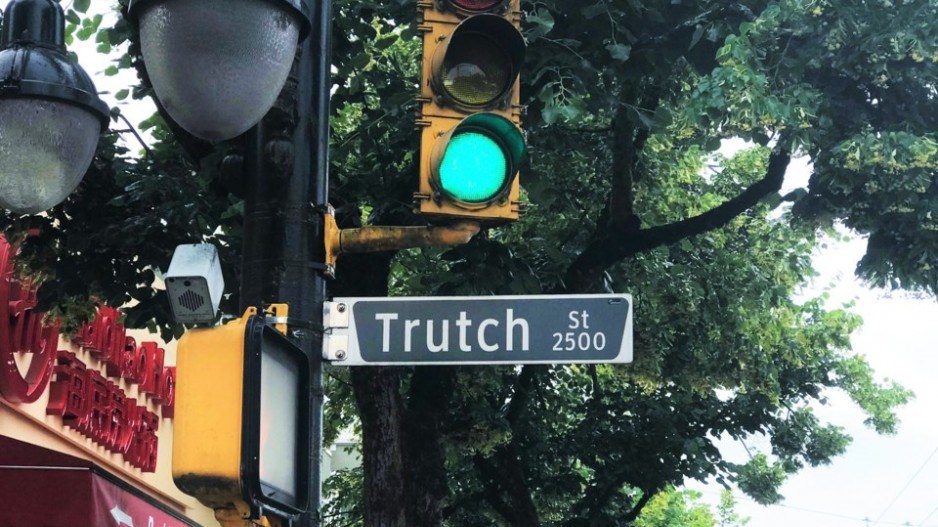Vancouver will join Victoria and Richmond on Friday afternoon in renaming a street named after the province’s first lieutenant-governor.
At an on-reserve, public ceremony, the Musqueam Indian Band will bestow City of Vancouver a new name for Trutch Street in Kitsilano on the second annual Truth and Reconciliation orange shirt day.
City council voted unanimously July 8 to support Mayor Kennedy Stewart’s name change motion. Stewart, whose re-election campaign team wears Forward Together-branded orange shirts, called Sir Joseph William Trutch, a “racist and chief architect of policies causing immense and long-standing harm to First Nations people.”
English-born Trutch came north from California for the Fraser River Gold Rush in 1858. He eventually negotiated British Columbia’s 1871 entry to Confederation and was appointed lieutenant-governor. But he was also known for disregarding aboriginal title and reducing the size of reserves.
In a 2017 B.C. Studies essay, former BC Liberal aboriginal relations and reconciliation minister George Abbott noted the 2003 rebuke of Trutch by Iona Campagnolo, B.C.’s 27th lieutenant-governor. Campagnolo called Trutch her “least illustrious” predecessor and blamed him for "prejudices and injustices that stain our provincial history.”
In April, without any fanfare, Richmond renamed its Trutch Street in the Terra Nova neighbourhood to Point Avenue, in honour of B.C.’s first Indigenous lieutenant-governor, Steven Point. Point chaired the Sto:lo Nation and sat as a provincial court judge before his 2007 to 2012 term at Government House.
On July 10, Victoria hosted an Esquimalt and Songhees ceremony to rename its Trutch Street as “Su’it Street.” In the Lekwungen language, Su’it, pronounced “say-EET,” means truth.
The Victoria renaming ceremony came a month before the fourth anniversary of Mayor Lisa Helps unofficially launching her last re-election campaign with the removal of the 1982-erected Sir John A. Macdonald statue outside city hall.
Canada’s first Prime Minister and Victoria member of parliament helped unite the country by railway, but also approved creation of the Indian residential school system. Helps said in 2018 that the statue removal was conceived in meetings of the so-called “city family” committee with local Indigenous leaders.
Minutes were not kept of the meetings and Victoria’s FOI office originally issued a $1,185 invoice to find email to city council from citizens about whether the statue should stay or go. It eventually disclosed 13 pages containing letters of support, plus a letter from the Sir John A. Macdonald Historical Society’s chair, Michael Francis.
Francis wrote that Macdonald worked to reform laws to enable Indigenous people to vote, but it was important to learn from mistakes made by leaders of the past.
“Sometimes an appropriate location of a statute with a suitable plaque to reflect the strengths and weaknesses of the individual may be far more instructive for all of us than its simple obliteration from the landscape,” said Francis’s letter.
After the statue was removed, it was placed in city storage.
On Sept. 22, outgoing mayor Helps led the unanimous vote to return the statue to the society for storage in Ladner.
Early last year, vandals beheaded the Queen Elizabeth II statue in the capital city’s Beacon Hill Park. On Canada Day in 2021, a mob tore down the Capt. James Cook statue across from the Empress Hotel and heaved it into the Inner Harbour.




